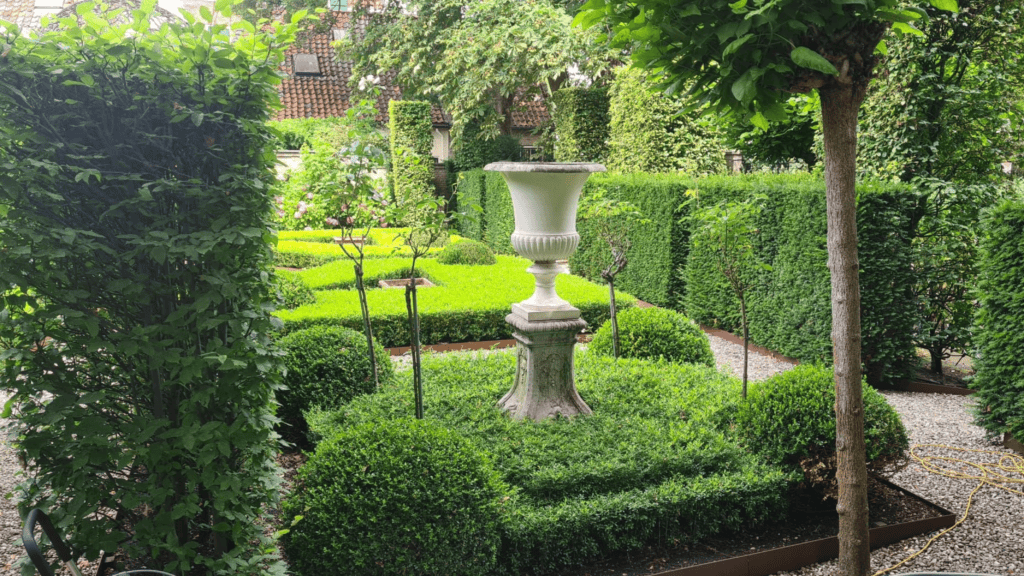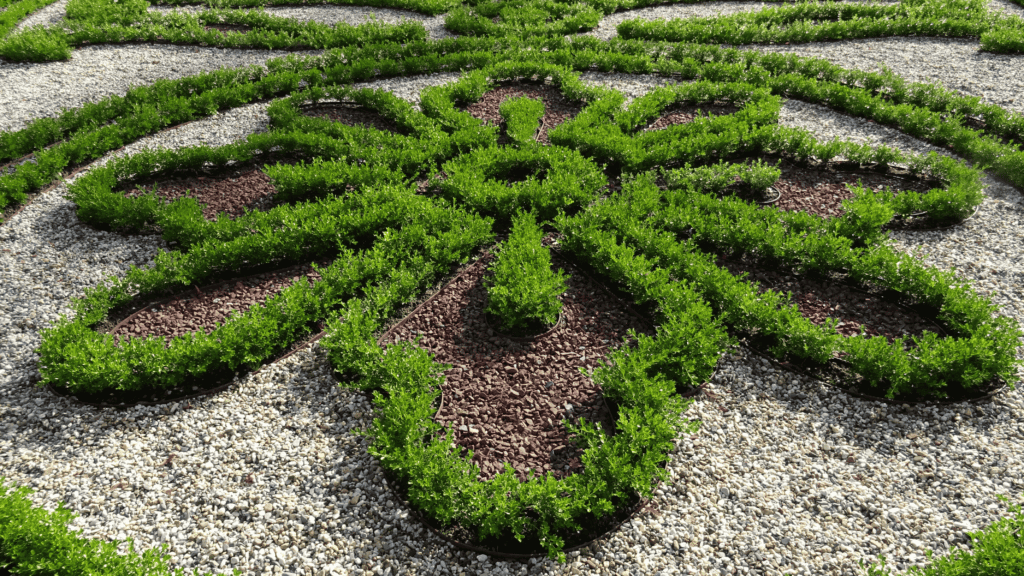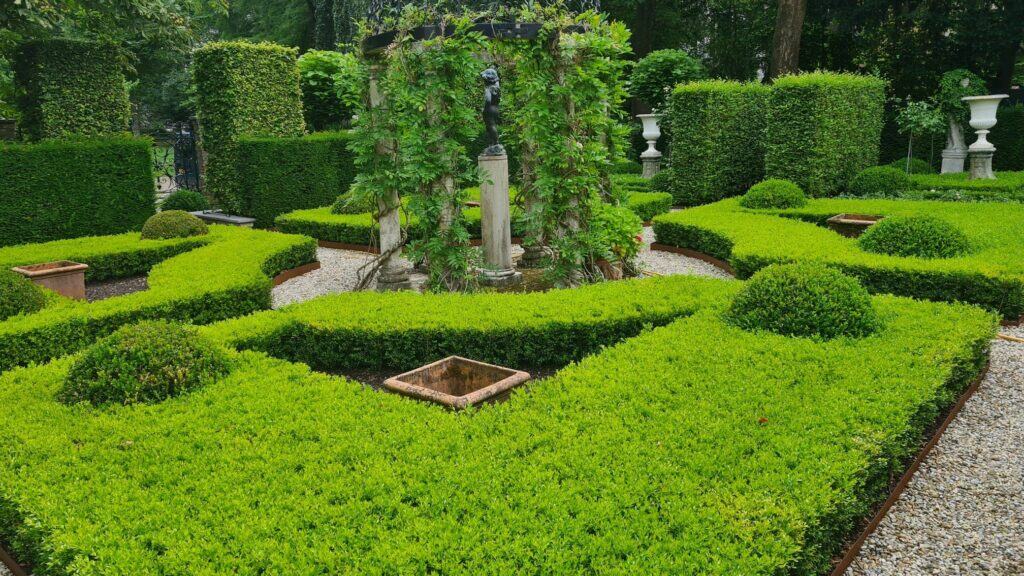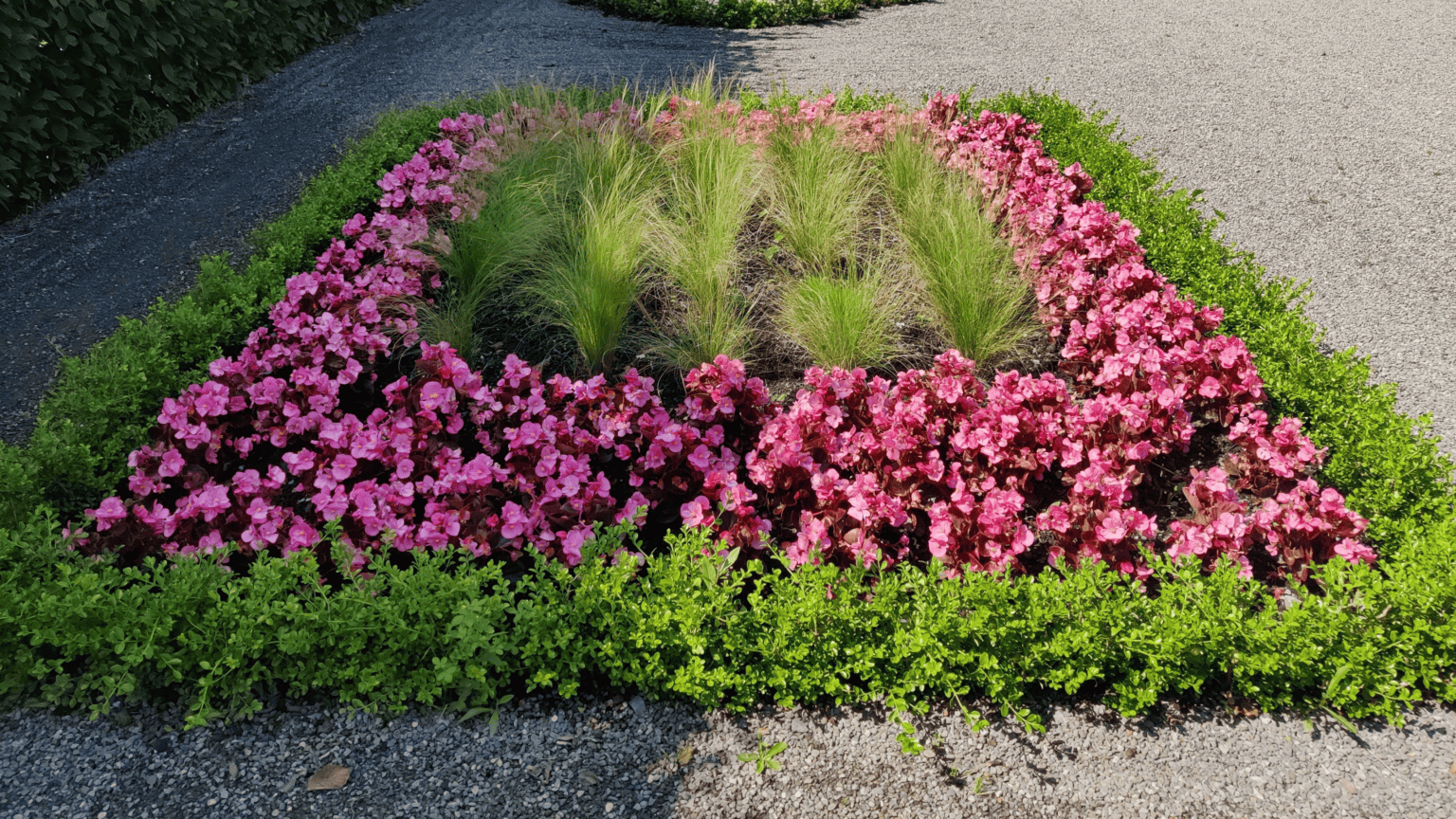From simple symmetry to rigid geometry, Better Boxwoods deliver formal elegance in all its styles.
Boxwood shrubs form the backbone of formal gardens, their evergreen foliage serving as a unifying element that ties the landscape together. Boxwood plants are well suited to creating the strong lines, elegant symmetry, and bold geometry characteristic of formal designs. They lend themselves to being sculpted into topiary or clipped into hedges, and they provide lasting color in containers. The repetition of boxwoods through a formal garden creates a sense of simplicity and harmony, while the diversity of cultivars available provides variation in form, height, and mass.
The Better Boxwood collection merges classic boxwood style with low-maintenance gardening in the form of tough, disease-resistant varieties that hold their form with less pruning. When you use Better Boxwoods in your formal designs, you can feel confident that your plantings will thrive despite the threat of boxwood blight. Here are five simple strategies for using Better Boxwoods in formal garden designs to give your landscape a refined, classic aesthetic.
Define Space with Living Walls
Structure lies at the heart of any well-planned landscape and is essential in creating the strong architecture and rigid organization integral to formal designs. In the garden, structure comes in the form of hedges, foundation plantings, and borders that clearly define the various spaces or garden rooms comprising the landscape. In formal designs, the walls of these rooms are created with stylish simplicity, typically repeating just one or two evergreen species like boxwood in orderly fashion.
Spacemaking begins at a garden’s edges, with screens or tall hedges establishing boundaries between neighboring properties and providing privacy. Maturing at a height of six to eight feet, Skylight™ boxwood is perfect for screening backyards from neighbors or for shielding porches from busy sidewalks. Walls are also needed within the interior spaces of a landscape to separate garden rooms. The tall, slender profile of Skylight™ also works well for this application.
Sometimes, we want to delineate space while maintaining a sight line to other areas of the landscape. This calls for a lower-growing boxwood variety such as Heritage™. Growing three to four feet tall and two to three feet wide, Heritage™ is ideal for planting in tight lines to frame pathways and create dense hedges.
If spacemaking begins at a garden’s edges, it ends at the house’s foundation. Here, the low spreading habit of Babylon Beauty™ makes an ideal choice. Growing three feet tall and four to five feet wide, Babylon Beauty™ is low enough to plant along foundations or porches without blocking windows or street views. Best of all, plants maintain their form with minimal pruning.

Use Strong Lines to Direct the Eye
Simplicity reigns in formal gardens, with long leading lines and geometric forms guiding the design and the eye. These lines are made by planting tidy rows and hedges of low-growing evergreens. With a dense, compact habit and growing just one to two feet tall and wide, Renaissance™ boxwood is perfect for lining walkways and outlining garden beds. It is slow growing and maintains its compact form with less frequent pruning, typically just once per year. Repeat linework toward the backs of planting beds and breezeways using a taller hedge of Heritage™ or Babylon Beauty™ boxwoods.
Renaissance™ boxwood is also an ideal variety for shaping parterres and knot gardens. These gardens feature bold geometrical patterns and strong symmetry typically created through low, clipped boxwood borders. Boxwoods also lend form to potagers or kitchen gardens. Typically less formal than parterres and knot gardens, potagers feature herbs and vegetables, plants that die out during the winter months, leaving the garden bare. In the potager, boxwoods provide color and structure through the winter months and serve as accents and borders throughout the year.

Punctuate the Garden with Accents and Topiary
The repetition and symmetry of formal gardens draws attention to focal points and accents in the landscape. A focal point may be a fountain or sculpture, or a plant with unique features. Boxwood shrubs can be used to emphasize focal points in the garden or serve as accents themselves.
To accentuate a focal point using boxwoods, consider flanking it with clipped or natural mounds of Babylon Beauty™ or boxwoods sheared into spiral or pyramid forms. Heritage™ and Skylight™ are ideal boxwood varieties for shaping. A low-growing hedge of Renaissance™ boxwood can be used to circle water a feature or decorative urn, while taller hedges provide a backdrop to sculptures and plant specimens.
Topiary boxwoods themselves make gorgeous accents in the garden. Topiary can be subtle and refined or bold and dynamic. Rounded standards lift the eye and repeat established forms in a decorative manner. Pyramids and spheres are more dramatic, lending themselves to focal points in containers and garden plantings.
With its upright form, Skylight™ makes a nice accent within mixed beds and on the corner of foundation plantings. It can be used in combination with lower growing hedges to provide upright movement and a restful visual reprieve, or to mark transitions in the landscape.

Create Inviting and Elegant Entryways
Use boxwood shrubs to make your home’s entryway clear and inviting. Line the front walk with a low hedge of Renaissance™ boxwood and flank the transition to the porch or stoop with a pair of boxwoods potted in tall urns. The doorway is another place to showcase a boxwood container. A set of rounded Heritage™ boxwoods makes for an elegant entrance. Or get playful with topiary containers, used either singly or in pairs flanking the doorway.
The front of the house is not the only place to dress up entryways. Patios, gates, and pathways throughout the garden have their own entrances. These garden doorways mark the transition between one outdoor room and another. The versatility of boxwood plants makes for endless possibilities to highlight spatial transitions in the garden. Use boxwood containers to mark transitions from garden to patio or try terminating boxwood hedges with clipped spheres to mark the ends of a pathway.
Style Balconies and Patios with Classic Containers
Bring timeless elegance to the smallest of spaces, whether your entire garden sits on a balcony three stories above the street or you enjoy a sprawling wrap-around porch. With their narrow profiles, Heritage™ and Skylight™ can be used to create a private oasis on balconies and patios without taking up too much space. Line planting boxes with a miniature hedge of Renaissance™ boxwood for small-scale spacemaking and contrast these with playful topiaries.
In larger landscapes, container plantings on the porch and patio create a visual connection between the home and garden. They carry the structure and order of the landscape right up to the front door, and provide a continuum of style, form, and color. With careful placement, container plantings can accentuate sight lines into the surrounding gardens. They can also be used to ground the bulk of the house into the surrounding gardens.

